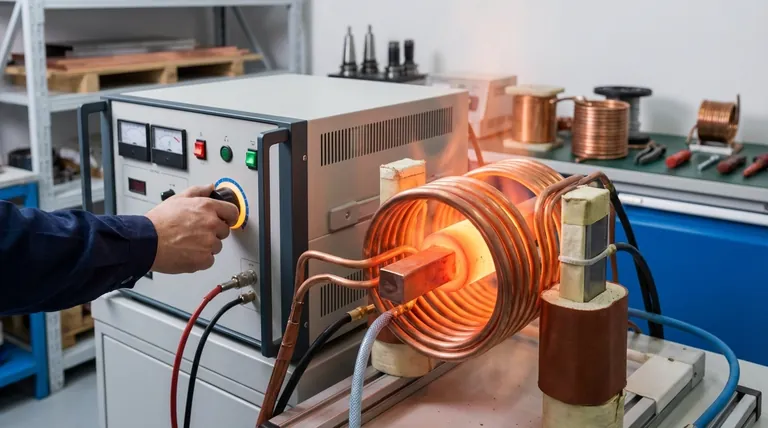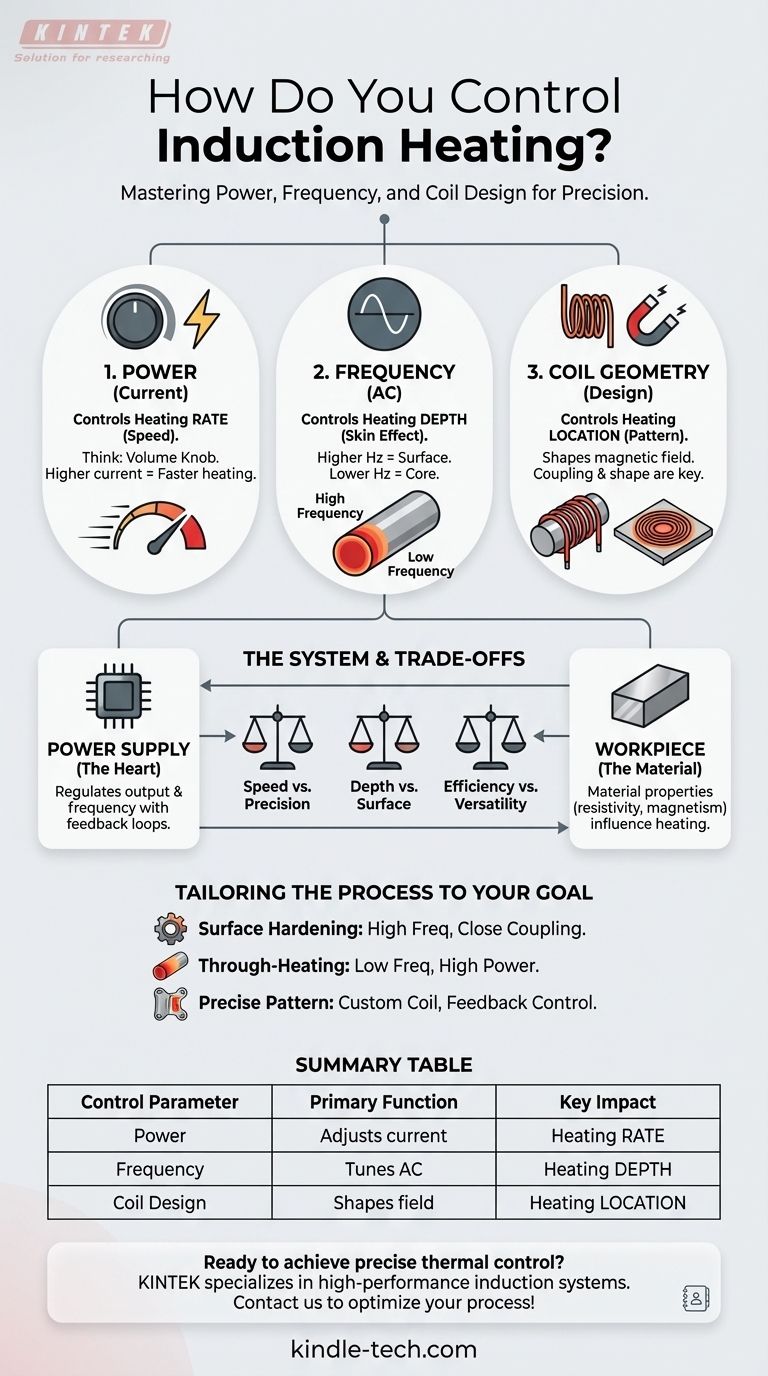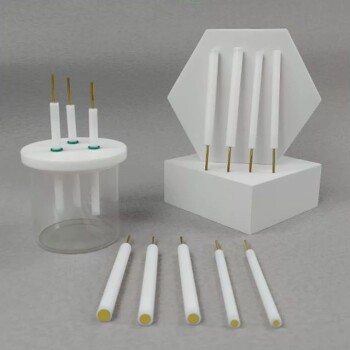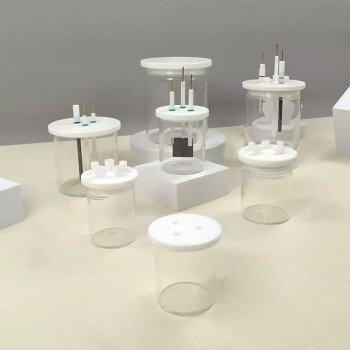Controlling induction heating is achieved by precisely manipulating three core factors: the power delivered to the induction coil, the frequency of the alternating current, and the physical design of the coil itself. These variables are managed by a specialized power supply, allowing you to dictate the rate, depth, and location of the heat generated within a conductive workpiece.
Effective control of induction heating isn't about adjusting a single variable, but about understanding the interplay between the power supply, the coil, and the workpiece. The goal is to manipulate the induced magnetic field to generate a precise, repeatable heating pattern.

The Primary Control Levers
The physics of induction heating begins with an alternating current in a coil, which creates a magnetic field that induces eddy currents in the workpiece, generating heat. Each step of this process presents a lever for control.
1. Adjusting Power (Current in the Coil)
This is the most direct control method. Increasing the power sent to the induction coil increases the amplitude of the current flowing through it.
A stronger current generates a more intense magnetic field. This, in turn, induces more powerful eddy currents in the workpiece, resulting in a faster heating rate.
Think of power as the volume knob for heat. It primarily controls how fast the workpiece reaches the target temperature.
2. Tuning the Frequency (Alternating Current)
The frequency of the alternating current is a more nuanced but critical control parameter. It determines the depth at which the heat is generated.
This phenomenon is known as the skin effect. Higher frequencies cause the eddy currents to concentrate near the surface of the workpiece, resulting in rapid surface heating. Lower frequencies allow the magnetic field to penetrate deeper, heating the material more uniformly through its core.
Choosing the right frequency is essential for matching the heating process to the application, such as surface hardening (high frequency) versus through-heating for forging (low frequency).
3. Modifying the Coil Geometry
The induction coil is not just a passive component; it is an active tool for shaping the magnetic field. The design and placement of the coil dictate where the heat is generated.
The distance between the coil and the workpiece, known as coupling, is critical. Closer coupling results in a more efficient transfer of energy and more intense heating.
Furthermore, the coil's shape—whether it's a simple solenoid, a pancake coil, or a complex, custom-formed shape—focuses the magnetic field onto the specific area you intend to heat.
The Role of the System Components
Your ability to use these levers depends entirely on the system's hardware.
The Power Supply's Function
The induction power supply is the heart of the control system. Modern, solid-state systems are responsible for taking line power and converting it into the precise high-power, high-frequency output required.
This unit allows the operator to set and regulate the power output and frequency, often using sophisticated feedback loops (like pyrometers) to maintain a constant temperature or follow a specific heating profile over time.
The Workpiece's Influence
The material properties of the workpiece itself are a passive but important factor. Materials with higher electrical resistivity will heat more effectively.
Magnetic materials like steel are easier to heat below their Curie temperature (where they lose their magnetic properties) because the magnetic hysteresis effect contributes additional heat alongside the eddy currents.
Understanding the Trade-offs
Controlling induction heating involves balancing competing factors. Being aware of these trade-offs is crucial for process optimization.
Speed vs. Precision
Applying very high power will heat a part quickly, but it can easily overshoot the target temperature, especially in a small or thin workpiece. A more controlled, slower application of power is often necessary for high-precision thermal profiles.
Depth vs. Surface Heating
This is the fundamental trade-off governed by frequency. You cannot achieve deep, uniform heating with the high frequencies used for case hardening. The choice of frequency must be made based on the primary heating objective.
Coil Efficiency vs. Versatility
A coil designed to perfectly match the contours of a specific part will be extremely efficient and precise. However, it will be useless for any other part. A more general-purpose coil offers flexibility but sacrifices the efficiency and precision of a custom design.
Making the Right Choice for Your Goal
Your control strategy should be dictated by your desired outcome.
- If your primary focus is surface hardening: Use a high frequency to concentrate the heat on the surface and design a coil that closely couples with the specific area to be hardened.
- If your primary focus is heating a large billet through its entire mass: Use a low frequency for deep magnetic field penetration and high power to minimize the time required to heat the entire volume.
- If your primary focus is achieving a precise, complex heating pattern: Invest in a custom-designed coil that mirrors the target geometry and use a power supply with precise time and temperature feedback control.
Mastering these variables transforms induction heating from a brute-force tool into a highly precise and repeatable manufacturing process.
Summary Table:
| Control Parameter | Primary Function | Key Impact |
|---|---|---|
| Power | Adjusts current in the coil | Controls heating rate and speed |
| Frequency | Tunes the alternating current | Controls heating depth (skin effect) |
| Coil Design | Shapes the magnetic field | Controls heating location and pattern |
Ready to achieve precise thermal control in your lab? KINTEK specializes in high-performance induction heating systems and consumables. Our experts will help you select the right equipment to master power, frequency, and coil design for your specific application. Contact us today to optimize your heating process!
Visual Guide

Related Products
- Molybdenum Disilicide (MoSi2) Thermal Elements Electric Furnace Heating Element
- Silicon Carbide SiC Thermal Heating Elements for Electric Furnace
- 600T Vacuum Induction Hot Press Furnace for Heat Treat and Sintering
- Gold Disc Electrode
- Double Plate Heating Press Mold for Lab
People Also Ask
- What material is used for furnace heating? Select the Right Element for Your Process
- Which high temperature furnace elements to be used in oxidizing atmosphere? MoSi2 or SiC for Superior Performance
- What are the properties of molybdenum heating element? Choose the Right Type for Your Furnace Atmosphere
- What are the heating elements for high temperature furnaces? Select the Right Element for Your Atmosphere
- What is the thermal expansion coefficient of molybdenum disilicide? Understanding its role in high-temperature design



















